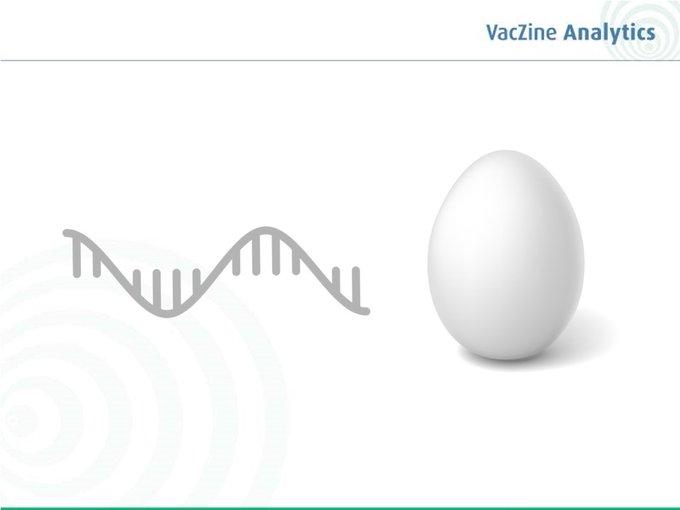Annual seasonal influenza epidemics typically affect 5-15% of the population with mainly mild upper respiratory tract infections. On a global basis around 1 bn infections occur yearly with 3-5 million cases of severe illness associated 290,000-650,000 deaths (WHO figures). Influenza infections also trigger various effects that can exacerbate underlying chronic medical conditions causing cardiovascular, diabetic, renal, and neurological complications. These individuals are thought to account for as many as 80% of all hospital admissions with laboratory-confirmed disease (Macias AE et al 2021)
Annual influenza vaccination is the most effective method for preventing influenza virus infection and its complications, now more so after restrictions during the COVID-19 pandemic. Low influenza circulation during 2020 and 2021 reduced population-level immunity and importantly, built the misguided belief that influenza is not a serious issue. Recommended groups for influenza vaccination are usually those most vulnerable and include the elderly, very young, those with underlying chronic diseases and certain occupations. In the US, influenza vaccination recommendations now include every person >6 mos and many countries are widening their recommendations to aim for universality. Globally, around ~70% of influenza vaccines distributed are of the new Quadrivalent (QIV) format although key markets such as Brazil still have not switched from TIV. High dose (HD), cell and adjuvanted formats referred to as ‘differentiated’ vaccines are now being rolled out in many Western countries. New 2022 US ACIP recommendations have now taken a preferential stance for differentiated vaccines in the >65 yrs segment. In Germany, a high-dose vaccine has also received a similar recommendation for elderly persons. from STIKO [January 2022].
Current influenza vaccines suffer from variability efficacy (~40-60%) mainly due to sub-optimal strain selection/drift and their protection wanes over time. An updated 2022 WHO position paper has stressed the need for the development of improved novel and universal influenza vaccines with an increased breadth and longer duration of protection, greater effectiveness against severe disease and decreased time from strain selection. New first-generation mRNA vaccines currently in Phase 3 efficacy testing seek to address these limitations and replicate the success of that platform observed in the COVID-19 pandemic.
This MarketVIEW product is a comprehensive MS Excel-based model + summary presentation (.pdf) which forecasts the potential commercial volume and value of seasonal influenza vaccines across 13 major individual Western and 37 emerging or rest of world (ROW) markets to 2035. The model contains validated volume (mio doses) estimates for all recommended target groups per country based on a thorough investigation of national recommendations and policy and detailed country-specific vaccine coverage rates. Country market values are ascertained by a pricing methodology based upon public/private sector prices for TIVs, QIVs, high dose (HD), LAIV and other forms where the impact of discount/return is explored. The analysis contains a detailed US forecast by product type and individual competitor including CSL Seqirus' QIV (Flucelvax®), MF-59 adjuvanted FLUAD® and the Sanofi HD (now QIV) portfolio (Fluzone-HD® + Flublok®). An updated methodology is introduced to estimate the adoption of QIV products outside of the key US market looking at >10 ROW suppliers and EU potential for new Sanofi differentiated products Supemtek® and Efluelda® entering the European market to challenge CSL Seqirus. An updated analysis of the UK expanded program is included with a brand-new demand by vaccine type analysis across the EU28 region. Key late-stage R&D programs are also assessed for market entry along with the new mRNA threat (ModernaTX mRNA-1010, 1011, 1012, 1020, 1030) and Pfizer (PF-07252220, PF-07852352) that have clear implications for future product strategy. Other mRNA programs from GSK, Sanofi and CSL Seqirus are covered along with Novavax recombinant protein approaches. New mRNA vaccines are forecasted with conservative and optimistic entry scenarios with discussion of potential drivers and resistors to their widespread adoption. MarketVIEW: Seasonal influenza vaccines is the ultimate up-to-date guide for this significant vaccine marketplace.
THE FULL PRODUCT IS A SUMMARY PRESENTATION (>420 slides, .pdf form) + MS-FORECAST MODEL (.xls) + MS-WORKBOOK (.xls)
VacZine Analytics® is a strategic research agency based in the United Kingdom since 2007. We aim to provide disease and commercial analysis for the vaccine industry and help build the case for developing new vaccines and biologics.
For more information, please visit the website www.vaczine-analytics.com or contact mailto:info@vaczine-analytics.com
VacZine Analytics® is a trading division of Assay Advantage Ltd, UK Company No. 5807728
Copyright. All Rights Reserved, 2022



